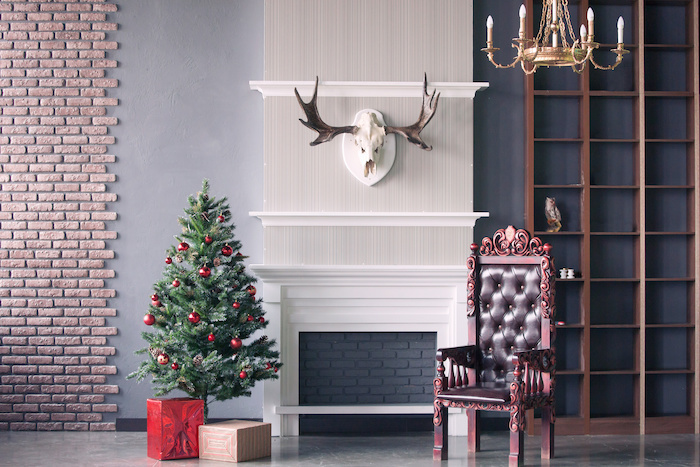“O Christmas tree, O Christmas tree, How lovely are thy branches...”
Who hasn’t at some time hummed this famous refraiN ? But do you know the story of the Christmas Tree in Alsace ?

We have to travel back in time to 1521 to find the earliest written reference to the existence of a Christmas tree.
On 21 December of that year, the payment of a sum of 4 schillings is mentioned in a book of municipal accounts for the town of Sélestat to pay the forest ranger whose job it was to watch over the trees in the Haut-Koenigsbourg forest. That book of accounts can still be seen today at the Humanist Library in Sélestat.

The Tradition of the Christmas Tree
The tradition of the Christmas tree as we know it today was introduced in 1738 by Marie Leszczyńska, the wife of King Louis XV. She set up a Christmas tree in the château of Versailles much as we do today in our own home.
In 2018, the Christmas tree is still one of our Christmas traditions in France. No fewer than six million are sold each year, five million of which are natural fir trees and one million artificial trees. The Christmas tree can be decorated in the traditional fashion with wooden ornaments, garlands and Christmas baubles. But it can also be decorated or set up in a more original fashion : DIY style fir trees made with recycled wood, a tree hanging upside down from the ceiling, a tree festooned with stuffed toy animals...

The Christmas tree allows us to express our creativity in the way we choose to decorate it and to adapt it to suit our interior décor and our tastes.
The most impressive Christmas tree in France is still, from its lofty 30-metre-high summit, the Christmas tree set up on Place Kléber in Strasbourg, the beating heart of Christmas. Every year, it brings joy to tourists, as well as to the people of Strasbourg themselves. Its beautiful decorations are illuminated every day at 5 pm as night falls.
The Symbols of Christmas Tree Decorations
The decorations hanging from the branches of the Christmas tree very often have a symbolic value.
Before the advent of Christmas baubles, red apples were used to the decorate the tree. They symbolised heaven and, more specifically, the apple bitten into by Adam and Eve. In a year in which the drought was particularly harsh, fruit was in short supply and, in a village in the north of Alsace, a craftsman had the idea of replacing the traditional apples with glass baubles.
In Alsace, it is also common to hang bredele from the tree, those small biscuits in various shapes and sizes and as many different recipes : Spritzbredele (shortbreads), Butterbredele (little biscuits made with butter), Schwowe Bredele (little Swabian biscuits), damiers or checkerboard biscuits, rum Bredele, Zemetsterne (cinnamon stars)… to mention just a few. Whether you spell it bredele or braedele, or even bredle or bredala (depending on which part of Alsace you come from), they are the symbol of redemption.
As for the 12 candles that it was the custom to place in the tree and light, they each represent one month of the year.
The top of the tree is traditionally adorned with a star or an angel. They symbolise respectively the Star of Bethlehem that guided the Three Wise Men to the baby Jesus and the Angels who spread the glad tidings of Jesus’ birth.
And what about before we spoke of the Christmas Tree?
Before the first mention of the “Christmas tree”, there were other customs that involved a fir tree during the Christmas period.
In around 2000-1200 BC, the Celts, who considered 24 December to be the day of the rebirth of the sun, adopted the habit of associating a different tree with each lunar month. The spruce (the tree of birth), more commonly called a fir, was dedicated to the month of December. The fir was then adorned with fruits, flowers and wheat, a practice quite similar to our Christmas tree tradition.
In 354 AD, the Church appropriated this pagan custom and associated it with the celebration of the birth of Christ on 25 December. Incidentally, it is said that a German monk, Saint Boniface (born in 680 AD), wanted to persuade the Germanic druids that the oak was not a sacred tree. He had one cut down, the tree fell over and crushed everything in its way except for a young fir tree… And the legend was born ! Saint Boniface turned this tale into a miracle, declaring “Henceforth, we shall call this tree the tree of the Christ child.”